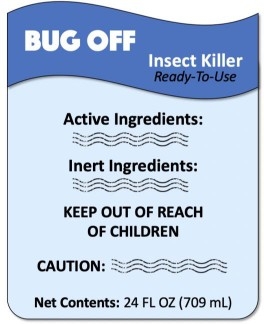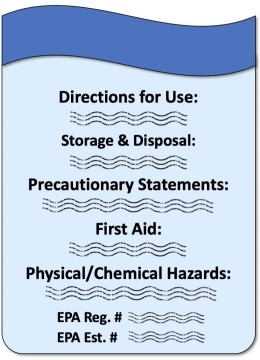Reading Pesticide Product Labels
ID
ENTO-390NP
Introduction
Reading the label on your pesticide product may seem like a daunting task, but it is an essential step when working with pesticides. You should always read the label before you purchase, use, store, or dispose of a pesticide or its container. This will ensure that you are prepared to work with a specific pesticide product.
A pesticide label is like a handbook; it outlines detailed information on how to use – or NOT use – a particular pesticide product. The label will answer any questions or concerns you have and can keep you from making mistakes.
Pesticide Product Labels and Your Safety
Not only should you read the product label before using a pesticide, you need to understand the information as well. If you have difficulty understanding a pesticide label, you should contact your local Extension agent for assistance. Keep in mind that pesticide labels are legally binding agreements between the manufacturer, the Environmental Protection Agency (EPA), and the end user. Once you have purchased a pesticide, you are required by law to follow all label directions. If a mishap occurs while a pesticide product is in your possession, you may be liable. Virginia is a “Label is the Law” state. Pesticide incidents are taken very seriously by local, state, and federal officials.
Label Components
Pesticide product labels are printed directly on the container, or they may be a leaflet-style label that is attached to the container. Regardless of how the label is affixed, take note of the different components or sections. The front panel of the pesticide container will display the following label components:
Brand Name – The marketing name given by the manufacturer.
Keep Out of Reach of Children – A statement on the front of the label. It is always a good idea to keep pesticides away from pets as well.
Ingredients Statement – A list of the amounts of active ingredient(s) (pesticide[s]) and inert ingredients (other additives).
Signal Word – A word that indicates a product’s relative acute toxicity. Possible signal words include “Caution,” “Warning,” and “Danger.”
Net Contents – The amount of product in the container, given in fluid ounces, pounds, etc.

The back panel of the pesticide container, or the pages within a leaflet-style label, contains the following additional information:
Directions for Use – This section lists:
Pests the product claims to control.
The intended application site.
How to handle, mix, load, and apply the product.
The application rate and how often the product can be used.
Any necessary application equipment.
Storage and Disposal – Included under the directions for use, this section contains instructions for proper storage, product disposal, and container disposal.
Precautionary Statements – Hazards to humans and domestic animals, and guidelines on how to reduce exposure to these hazards.
First Aid – Recommended treatments for accidental exposure or poisoning.
Physical/Chemical Hazards – Information about the hazards a product may pose, like the potential for fires or explosions.

Environmental Hazards – Environmental statements that may reference the health of fish, bees, birds, etc.
EPA Registration Number – Indicates the product label has been approved by, and registered with, the Environmental Protection Agency.
EPA Establishment Number – Identifies the facility where the pesticide was produced.
Conclusion and Resources
Remember to read the product label every time you use a pesticide. Take time to familiarize yourself with the different components. Even if you have used the same pesticide product in the past, you should read the label again because its information could change over time. Reading the label will help you avoid errors that can lead to pesticide misuse and subsequent human health and environmental safety risks.
Additional information on reading pesticide labels:
Environmental Protection Agency: epa.gov/pesticide-labels/keep-safe-read-label-first
Virginia Tech Pesticide Programs: sites.google.com/vt.edu/vtppconsumerpse/reading-the-label
National Pesticide Information Center: npic.orst.edu/health/readlabel.html
Pesticide Environmental Stewardship: pesticidestewardship.org/homeowner/how-to-read-the-label/
Virginia Cooperative Extension materials are available for public use, reprint, or citation without further permission, provided the use includes credit to the author and to Virginia Cooperative Extension, Virginia Tech, and Virginia State University.
Virginia Cooperative Extension is a partnership of Virginia Tech, Virginia State University, the U.S. Department of Agriculture (USDA), and local governments, and is an equal opportunity employer. For the full non-discrimination statement, please visit ext.vt.edu/accessibility.
Publication Date
January 7, 2021



